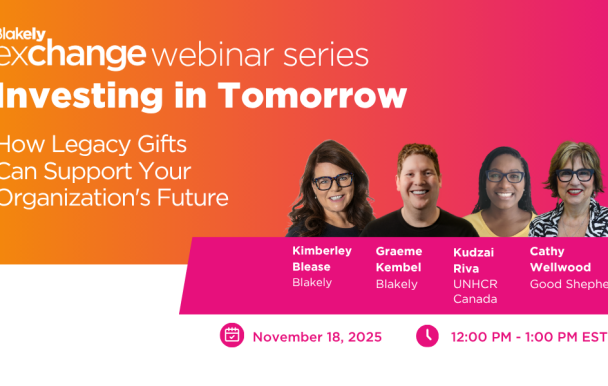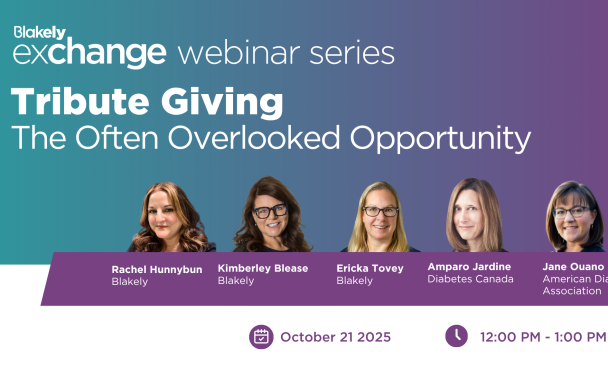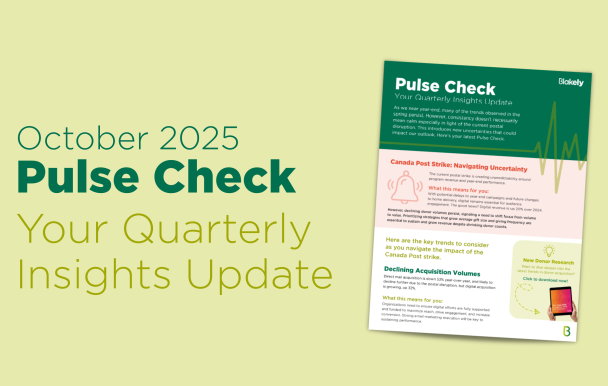Four Steps Towards Better D.X.
From my perspective, there has been one question on fundraisers’ minds more than any other lately:
“How do I create a best-in-class donor experience?”
It seems everyone is aware that donor experience (D.X.) is what can set your organization apart in the charitable marketplace. What your communications make a donor feel, think, and do are critical to the way they engage with your organization – and this isn’t just about donor love! It’s about how you are really treating people from start to finish. And it’s about your bottom line, too. It’s about the impact you’re actually able to make with the revenue you raise, and the benefits that creating a great D.X. has on your long term ROI.
So, knowing how critical the donor experience is to your organization’s success, how do you make it great? Here are four important steps to take in creating the best-in-class donor experience all fundraisers want:
#1 – WHERE ARE YOU NOW?
First things first – what is the donor experience now? Although it may sound obvious, taking an in-depth look at your current donor journeys is an underutilized strategy in creating better donor experiences. If you don’t have a holistic view of all the communications – emails, Facebook ads, videos, direct mail, etc. – your donors are receiving, how are you ever going to be able to treat donors the way they should be treated? And honesty is important – skipping over a department who is talking directly to donors doesn’t make them go away, it makes the problem unfixable.
#2 – UNDERSTAND THE BARRIERS
We feel your pain. We know that when we’re sharing these ideas that we’re usually preaching to the choir, and that the obstacles in the way of best-in-class donor experience are rarely you and your good strategy/intentions. More often it’s organizational silos, a lack of alignment between departments, or the classic, “oh, that’s not my job” attitude.
Unfortunately, the donor doesn’t know the difference. The donor sees you as one charitable organization and they have no idea that you have various revenue areas, or Major Gift, Annual Giving, and Event teams or Comms.
Although we can’t fix all these institutional roadblocks, we can at least understand them, address them, and maybe try to get around them, because what we communicate to donors needs to make sense and be seamless – no matter which department is sending it out. Share the information that is holding you back from great donor experience and make friends in these other departments!
#3 – MAP IT OUT
Once you know where you stand and what the current obstacles are, you can map out where you want to be moving forward. We talk a lot about what it feels like to walk in a donor’s shoes – what do they need from you to engage more deeply in your mission? How can you meet their expectations, and then also exceed them by inspiring them in ways they never imagined?
To do this, you really need to plot it all out – maybe it’s a journey map, maybe it’s an Excel spreadsheet, maybe it’s a lot of doodles on a white board. However you do it, consider all the campaigns (renewal, spring, holiday, etc.) channels (mail, email, Facebook, etc.), audiences (regular, mid-level, monthly, etc.), strategies (renewal, upgrade, stewardship, etc.), and more as you go along. Don’t map out campaign-by-campaign, but more holistically, allowing you to look at the donor’s overall experience and not just what they’re seeing from you next month.
Remember, it’s us fundraisers’ job to do the heavy lifting for donor experience; we can’t just throw everything at donors and expect them to sort it out themselves. And again – share it internally; show others what it really looks like to be your organization’s donor!
#4 – KEEP IT SIMPLE. SAY THANK YOU.
If you got an eye twitch when you read about journey mapping, relax. It doesn’t have to be that complicated.
Donor experience is the result of how we communicate with donors. And if we’re looking for donors to feel something different and therefore do something different, then we really need to focus on making them feel great.
So if we’re just throwing appeals at them without ever giving them feedback on what they’ve already impacted, or never giving them a newsletter telling them stories about the difference they’ve made, or never thanking them or surprising and delighting them… then guess what?
They’re going to behave the same way they already have been. Or worse! They’re going to get tired of the way you’re treating them and drop off your file. Much of the data we look at on retention, and numbers of lapsing and inactive donors validate that.
IN CONCLUSION
Figure out where you are today, address what’s in the way of doing better, and then figure out how to do your best in the face of the obstacles that remain.
And no matter what, keep it simple and tell your donors thank you, and tell them what they’ve made possible. Sadly, that’s one of the biggest missing pieces from most charities’ donor experience, and an easy way to make your donor experience great (even if you still can’t get marketing and fundraising on the same page).
We know this is a topic of conversation in every one of our clients’ organizations (as it should be) and so we are looking forward to hosting a client session on D.X. at the end of May. We will be covering why you need to “Stop the B.S. in your D.X.”, how to implement a truly donor-centred program, and what that really looks like.
Keep an eye out in early June for a blog post on key takeaways from that session! Future blogs will also include segmenting to manage the journey differently and secrets to making friends (in different departments!).









